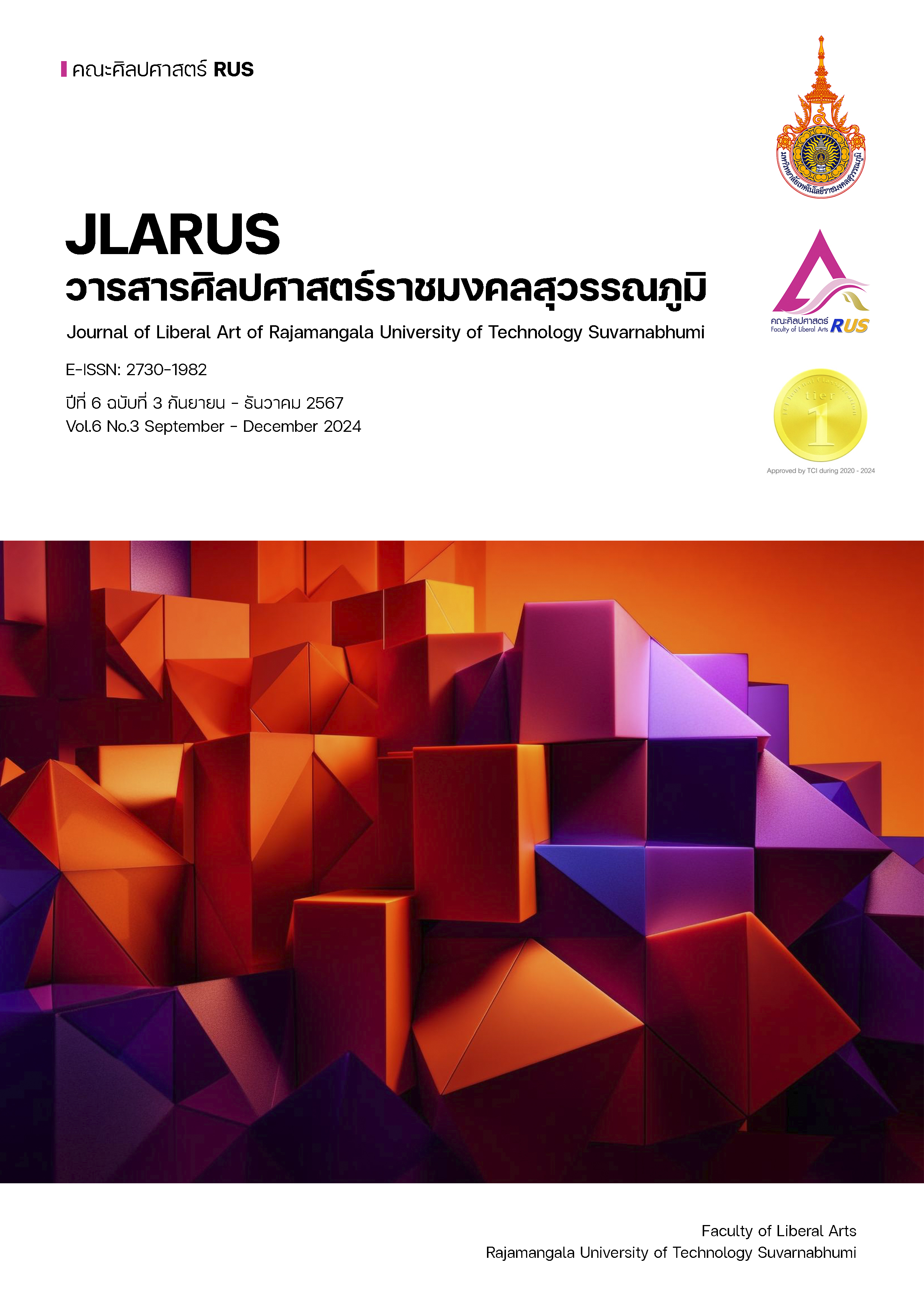RELATION BETWEEN MCKINSEY 7-S FRAMEWORK AND EIGHT BASIC PRINCIPLES
Main Article Content
Abstract
Business competition has increasingly caused organizations to face problems. Management must understand organizations in order to lead to continuous organizational development. The objectives of this research paper were 1) to study the content for the concept of the McKinsey 7-S Framework and Eight Basic Principles, and 2) to study the relationship between the concept of the McKinsey 7-S Framework and Eight Basic Principles. This research used a mixed-methods approach by adopting a quantitative and qualitative paradigm. A questionnaire was used as the data collection tool. The sample consisted of 419 industry representatives in the eastern region. Qualitative data were obtained from discussions with 15 experts using data analysis descriptive statistics, including frequency, percentage, mean, and standard deviation, as well as exploratory factor analysis.
According to the research findings, the majority of the respondents were males between the ages of 30-40 years. Most had an educational level at the Bachelor's degree, held manager positions, and had worked for 10-20 years at large business organizations. The concept of the relation to McKinsey 7-S was at a high level overall (𝒙̅ = 4.21). For the relation between McKinsey 7-S, the 15 experts (100%) agreed that there was a relationship with the following aspects: 1) Systems and operating methods are related to practice focus, 2) strategy is related to customer proximity and business expertise, 3) staff are related to freedom of work and ownership, 4) style is closely related to work experience, 5) shared values are related to belief in values, 6) structure is related to the structure that has a simple form and limited administrative personnel, and 7) skill is related to being strict and lenient with employees at the same time. Executives should be able to understand the principles of organizational management to be used as a basis for management,...
Article Details

This work is licensed under a Creative Commons Attribution-NonCommercial-NoDerivatives 4.0 International License.
References
กัลยา วานิชย์บัญชา. (2560). การวิเคราะห์ข้อมูลหลายตัวแปร. บริษัท ธรรมสาร จำกัด.
กรมโรงงานอุตสาหกรรม. (2565). บริการข้อมูล. https://www.diw.go.th/webdiw/s-data/.
ธีรพงศ์ ประดิษฐ์กุล. (2563). ทฤษฎีองค์การสมัยใหม่.วารสารการพิมพ์ไทย. ฉบับที่ 128. 17 ธันวาคม 2563. https://www.thaiprint.org/2020/12/vol128/knowledge128-03/.
ธานินทร์ ศิลป์จารุ. (2555). การวิจัยและวิเคราะห์ข้อมูลทางสถิติด้วย SPSS และ AMOS. (พิมพ์ครั้งที่ 13). บิสซิเนสอาร์แอนด์ดี.
ราชบัณฑิตยสถาน. (2554). พจนานุกรมฉบับราชบัณฑิตยสถาน พ.ศ. 2554. (พิมพ์ครั้งที่ 2). นานมีบุ๊คส์ พับบลิเคชั่น.
วีรชัย ตันติวีระวิทยา. (2537). ดั้นด้นหาความเป็นเลิศ. (พิมพ์ครั้งที่ 7). บริษัท เอช.เอ็น. กรุ๊ป จำกัด.
ศิระ โอภาสพงษ์. (2539). ค้นหาความเป็นเลิศ. (พิมพ์ครั้งที่ 4). บริษัทคู่แข่ง จำกัด.
สุทธิชัย ปัญญโรจน์. (2555, 23 มิถุนายน). การบริการด้วยหัวใจ. https://www.gotoknow.org/ posts/425881
สหธร เพชรวิโรจน์ชัย. (2564, 4 มิถุนายน). วัฒนธรรมองค์กร. https://th.hrnote.asia/ orgdevelopment/what-is-organizational-culture-210604/#2_Values.
ฤทธิชัย บุญธรรม และวิไลลักษณ์ เรืองสม. (2562). รูปแบบการบริหารงานแบบ 7s framework กับองค์กรปกครองส่วนท้องถิ่น. การประชุมวิชาการนำเสนอผลงานวิจัยระดับชาติของนักศึกษาด้านมนุษย์ศาสตร์และสังคมศาสตร ครั้งที่ 2. (น. 2116-2126). คณะมนุษยศาสตร์และสังคมศาสตร์ มหาวิทยาลัยราชภัฏสวนสุนันทา.
Best John W. and Khan, Jame V. Research in Education. (8th ed.). Boston: Allyn & Bacon,1998
Daft, R. L. (2004). Organization Theory and Design. (8th ed.). RR Donnelley & Sons Company Willard.
Likert, R. (1967). The human organization: its management and values. McGraw-Hill, Publishers Inc.
Michalski, A. (2011). The McKinsey 7-S Framework: Invented in the 1980s and Still a Possibility for Success Today. GRIN.
Peters, T. J., & Waterman, R. H. (1982). In search of excellence: lessons from America’s best-run companies. Harper & Row Publishers Inc.
Winstanley, D., & Stuart‐Smith, K. (1996). Policing performance: the ethics of performance management. Personnel Review, 25(6), 66-84. https://doi.org/ 10.1108/00483489610148545.
Yamane, T. (1973). Statistics: An Introductory analysis (4th ed.). Harper and Row Publication.


